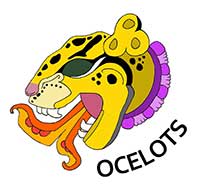Resources
Functional trait-based restoration. Can hybrid restoration enhance invasion resistance and ecosystem services?
Author(s): Rebecca Ostertag1, Nicole DiManno2
1. University of Hawaiʻi at Hilo 2. Oregon State University
2427 total view(s), 82 download(s)
- Gala
Acknowledgements.docx(DOCX | 12 KB)
Ostertag cover photo.jpg(JPG)
- License terms
Description
This module provides learners with an in-depth look at an active restoration experiment in Hilo, Hawaiʻi. Students will learn the background information about functional trait theory and principal components analysis that was used to design the hybrid restoration experiment, and gain important context for doing restoration in bioculturally active areas such as the Hawaiian lowland wet forests. Through two exercises, students will: 1) ponder the values of native and non-native species, in terms of ecosystem services; 2) examine tradeoffs of how to meet restoration objectives; and 3) plan a restoration effort in their local area. This module is meant for class discussion, to address thorny issues related to the determining what species belong in an ecosystem and which biological and economic tradeoffs are acceptable in the Anthropocene world we have created.
In this age of the Anthropocene, restoration to a previous reference condition may not be feasible in all situations, due to lack of information, urbanization, invasive species, or climate change. When site improvement and enhanced ecosystem services are desirable, a valuable option may be hybrid ecosystems, in which species are planted together even if they did not coexist together historically. The Hawaiian Islands are known for a prevalence of non-native species, a portion of which are highly invasive and degrading ecosystem structure and function. A restoration experiment in an invaded lowland wet forest in Hilo, Hawaiʻi tests four different species combinations (teams)—using both native species and non-native non-invasive species—that were carefully chosen using functional trait theory. The teams were followed for five years to determine whether hybrid ecosystems can meet the objectives of increased carbon storage, regeneration of native biodiversity, resistance from invasive species, and low levels of maintenance. Because hybrid ecosystems represent a paradigm shift in restoration planning, opinions about the values and functions of non-native species will be challenged. This module ponders how supporting tropical forest recovery in the Anthropocene engenders hard decisions that restoration practitioners must confront--about what species belong in an ecosystem and which tradeoffs are acceptable--in terms of biological desires and economic realities. This module works best with a class discussion component.
- Understand the conceptual basis for using functional trait theory in restoration
- Demonstrate the ability to interpret scientific figures
- Compare the outcomes of the four different teams, evaluate their ecological and economic tradeoffs, and make recommendations
- Explain the concept of hybrid ecosystems and the controversies related to their societal acceptance
- Evaluate whether functional trait-based restoration could be a viable strategy in other ecosystem types and other parts of the world
Support was provided by: A grant from the United States National Science Foundation (DBI-RCN-UBE 2120141).
Cite this work
Researchers should cite this work as follows:
- Ostertag, R., DiManno, N. (2023). Functional trait-based restoration. Can hybrid restoration enhance invasion resistance and ecosystem services?. OCELOTS Incubator: Creating an online module in tropical biology, QUBES Educational Resources. doi:10.25334/HG3Q-VE19
